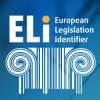Recommendation 21 | Interoperability Layer: Interoperability governance
Put in place processes to select relevant standards and specifications, evaluate them, monitor their implementation, check compliance and test their interoperability.
Solutions
| List of all available solutions that implement this recommendation |
|---|

|
As the library provides an assessment of existing technical specifications, it gives the chance to select relevant standards or specifications, as well as evaluate them. |

|
The objective of the CAMSS List of standards is to monitor the national catalogues of recommended and mandatory specifications in order to facilitate their selection. |

|
The CAMSS Ontology is a formal description of knowledge as a set of concepts within the CAMSS domain and the axioms connecting its concepts and allowing for logic inferences. |

|
The use of CAMSS tools allows public administrations to select relevant standards and specifications for their solution or digital public service. |

|
CAMSSaaS supports the assessment of existing specifications and their selection. |

|
Thanks to the experimentation platform and a repository of tools supporting Big Data pilots, BDTI helps bid data pilot implementers to verify the interoperability readiness of their solutions by performing tests. |

|
The AS4 standard recommended to be used by all public administrations was chosen and defined together with all Member States, thus following a rigorous selection process. |

|
Thanks to the Interoperability Readiness Testing platform, eID helps eIDAS-Node implementers verify the interoperability readiness of their nodes by performing tests based on test assertions derived from the eIDAS technical specifications. |

|
Thanks to the eInvoicing conformance testing service, which provides test cases and a ready-to-use testing platform to assess Member States' solution’s technical compliance with the European standard, Member States can verify their compliance with the standard and ensure that they select appropriate solutions. |

|
The ELI Annotation tool allows to annotate and publish text in compliance with ELI standard, hence ensuring the interoperability of published legal texts. |

|
The ELI is system that aims to make legislation available online in a standardised format, irrespective of the owner of the data. Hence, by using ELI, data owners are able to check compliance and ensure interoperability of their legal texts. |
| The ELI validator allows its users to assess the compliance of European Legislation Identifier (ELI) metadata against the ELI ontology requirements. | |

|
In order to help service providers and public administrations test interoperability and conformity of the eSignature solutions, eSignature provides an electronic signature conformance checker, which verifies the conformity of advanced electronic signatures against the ETSI standards. |

Location Framework Blueprint
|
Recommendation 12 of the EULF Blueprint recommends the application of relevant standards to develop a comprehensive approach for spatial data modelling, sharing, and exchange to facilitate integration in digital public services, thus inherently recommending setting up an approach for selecting and evaluating the use of these standards. |

|
The test bed allows to test the level of interoperability of solutions and specifications. |

|
Test Registry and Repository contains assets related to testing, which can support testing and selection of standards and solutions. |

|
The Sharing and Reuse Framework recommends the use of Common Standards and encourages creation of a list of such existing specifications and encourages the provision of information in multiple languages. |
|
OpenPM² |
OpenPM² is a project management methodology and it is important to implement a PM methodology when documenting and managing standards and specifications. |





